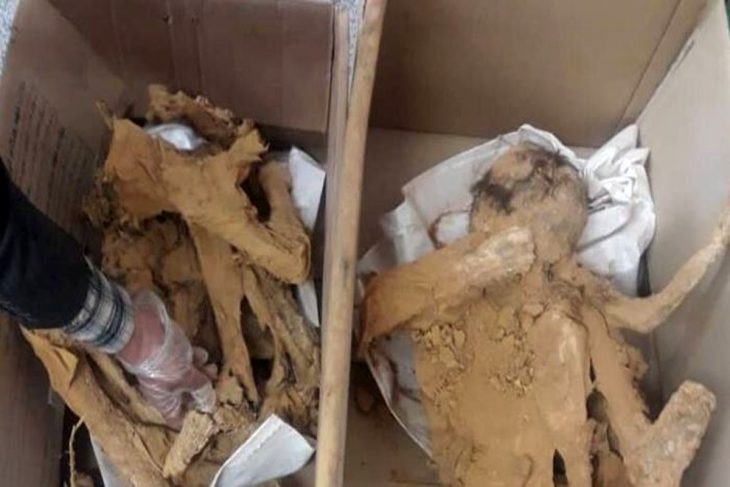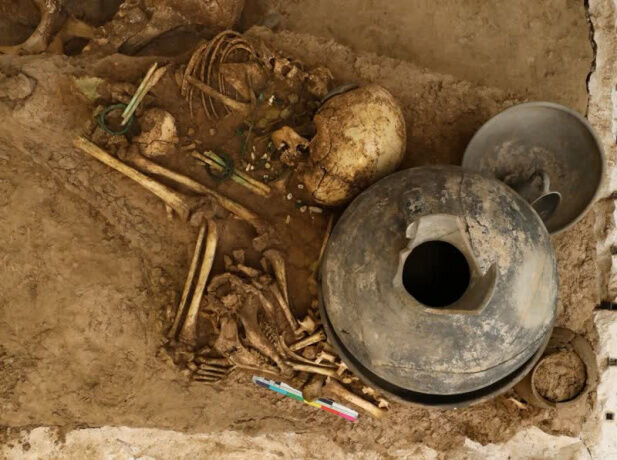Archaeologists from the University of Tehran have recently made a fascinating discovery in the Segzabad region of Qazvin province, central-west Iran. During their excavations in an ancient cemetery, under the guidance of Dr. Mustafa Deh Pahlavan, the team unearthed the remains of children dating back 3,000 years, shedding new light on the ancient inhabitants of the region.
The excavation, spanning an area of five square meters, revealed a wealth of artifacts including the remains of children, babies, and fetuses, alongside the skeletal remains of two horses, two goats, and a sheep. Dr. Mostafa Deh Pahlavan, head of the Institute of Archaeology at the University of Tehran, described the complexity of the discovery, highlighting the diverse range of findings within the confined space.
“The complex, encompassing an area of five square meters and weighing approximately 10 tons, contains the remains of nine children, a baby, and a fetus, along with the skeletal remains of two adult horses, two goats, and a sheep,” explained Dr. Deh Pahlavan. The meticulous excavation revealed distinct layers of burials and graves, providing insights into burial practices and cultural traditions of the ancient inhabitants of Qazvin province.
The burial site, known as the eastern cemetery of Qara Tepe, exhibited unique burial practices where aborted fetuses and babies were interred in clay cooking pots. Additionally, animal remains such as goats, immature sheep, cows, camels, and horses were found alongside human burials, suggesting a ritualistic association between humans and animals in burial ceremonies.

Detailed analysis of the child’s skeleton indicated an estimated age of less than six years based on dental development and bone length. The excavation also unearthed evidence of varying burial practices, including the burial of two adult horses of different breeds, adorned with bronze beads and remnants of an iron bridle, indicative of the cultural significance attached to equine companionship.
Dr. Deh Pahlavan further elaborated on the diverse findings within the excavation site, noting the discovery of human and animal remains in a chaotic state, including human fetuses alongside an adult sheep skull. The presence of pottery artifacts such as containers, jugs, and decorated pots added to the archaeological richness of the site, reflecting the material culture and artistic craftsmanship of the ancient inhabitants.
Of particular significance was the discovery of a child’s skeleton accompanied by clay dishes and burial ornaments, including bronze bracelets, a ring, and remnants of a necklace composed of stone, bronze, and ivory beads. These artifacts hint at the social status and cultural practices of the individuals laid to rest in this ancient cemetery.
The discovered collection has been carefully relocated to Segzabad municipality for preservation and display, adhering to conservation and restoration standards to ensure the long-term protection and accessibility of these invaluable archaeological findings. The excavation in Qazvin province continues to unravel the mysteries of ancient civilizations, offering a glimpse into the rich heritage and cultural tapestry of central-west Iran.
